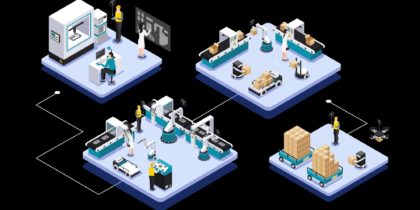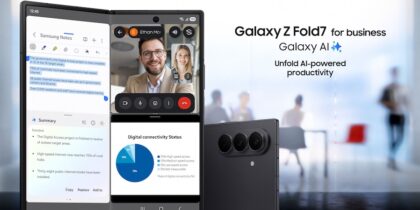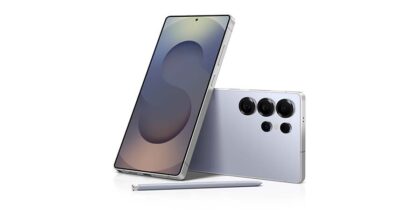In sectors like public safety, manufacturing or hospitality, two-way radios have been central to the way frontline workers communicate for decades now. So, for operations leaders, there’s a natural hesitance to moving from tried-and-true land mobile radio (LMR) technology to modern smartphones — unless the advantages clearly outweigh potential for added complexity. Two-way radios don’t have the diverse capabilities of a smartphone, for instance, but they are reliable for geographically-confined communications use cases, and offer a degree of control and security that not all mobile apps can offer.
Fortunately, ESChat is changing that by bringing smartphone-based push-to-talk (PTT) technology to carrier and enterprise LTE environments.
Founded in the early 1990s as a developer of wireless infrastructure and based in San Luis Obispo, California, ESChat offers a full-featured broadband PTT solution that can be interconnected with traditional LMR systems. This is an easy transition, whether moving to standalone broadband PTT or to hybrid broadband and LMR PTT networks with seamless PTT communication interoperability.
“One of the things that people don’t understand is that trying to perform real-time PTT on a network that was designed for a different purpose is challenging,” explains Josh Lober, ESChat’s CEO. “Land mobile radio systems were purposefully built to do one thing, and they do it extremely well, whereas the commercial cellular networks were built for a different purpose — initially voice calls and later broadband data, which enables connectivity for all sorts of apps.”
ESChat’s technology is specifically designed to offer a low latency, high voice-quality, real-time experience, ensuring that when people communicate, they’re never out of sync or talking over each other.
How CBRS is opening up enterprise LTE network opportunities
ESChat initially focused its application on the public safety community, starting with its first deployment in 2008 at Edwards Air Force Base in California. Since then, however, advancements in infrastructure and device technology have opened up new avenues for growth in sectors ranging from hospitality and logistics to retail and beyond.
Transform business operations with 5G connectivity
Get this free guide from IDC on how to drive revenue growth through 5G adoption in the enterprise. Download Now
The advancements include the introduction by the Federal Communications Commission (FCC) of Band 48, otherwise known as Citizens Broadband Radio Service or CBRS. With a frequency band of 3.5GHz, CBRS offers enhanced mobility and range, capacity for high-data-rate applications, and improved security (by keeping data local).
In a hotel environment in the past, for example, everyone from front-desk employees to housekeepers might have used two-way radios to stay coordinated and provide updates on the progress of their tasks. Although the hotel might have set up a Wi-Fi network for guests, deploying enterprise LTE using CBRS keeps employees on a separate connection that’s more reliable and robust.
“You have this split need, and that’s where CBRS makes sense,” Lober says. “Not only is it providing the data rates and the high broadband connectivity, but it’s also providing the security that’s needed. Now you can offload your guest networks. You can put your professional services on a private, secure LTE environment.”
ESChat sees the same potential for enterprise LTE in virtually any campus environment. Beyond its roots in public safety, Lober says the firm is also winning clients in transportation, education, utilities and more.
While CBRS is relatively new, it offers enterprise-quality LTE data speeds — with greater control and flexibility. It also offers organizations a cost savings compared to the upfront investment of LMR and public LTE.
“Traditional radio networks are expensive. A radio can cost $1,000 or more. You’re dealing with a CAPEX business model, where you have to buy a lot of infrastructure,” he says. “While enterprise LTE means you still buy the CBRS infrastructure, the services become more traditional, SaaS-like communications tools.”
Inside ESChat’s customer-centric approach
ESChat has been working closely on enterprise LTE network on deployments with Samsung, which is providing CBRS network equipment and expertise. Once a CBRS deployment project begins, ESChat coordinates with customers to determine their specific needs and identify groups of target users. Depending on the use case, ESChat can offer encrypted PTT voice, encrypted multimedia group messaging, as well as user tracking and mapping (both live and historical). From there, its application can be preconfigured and deployed to provide secure and fully interoperable communications between traditional dispatch consoles and LMR radios that may currently exist within the customer’s environment.
Despite their initial success, Lober says that, compared to many mobile devices, traditional radios had some design advantages, like a loud speaker and a dedicated PTT button. This drove ESChat — which had already been working with Samsung on LTE deployments — to expand its partnership to integrate its app with the Galaxy XCover Pro, which supports CBRS.
“The XCover Pro incorporates three key features we look for in a PTT device: a dedicated PTT button, a speaker that is loud enough to be heard in noisy environments and a battery that lasts an entire shift,” Lober says. “There’s no longer a need to decide between a functional device that looks like a brick, and an elegant device that doesn’t meet the needs of a PTT user. The XCover Pro has it all.”
These details matter because, as Lober points out, a phone without a dedicated PTT button requires the use of the touchscreen to begin talking. This means the screen has to be on, and the PTT app running in the foreground. This mode of operation is unacceptable to many PTT users, especially those who work “heads up.” Further, because this mode requires the screen to be on during PTT calls, it contributes to an accelerated battery drain. The XCover Pro’s dedicated PTT button also means ESChat users can easily multitask — for example, they can check their email while continuing to talk without interruption.
“Part of what’s exciting about the partnership with Samsung is that — together with the network piece, the handset and the software — we have all the elements you need to fulfill the customer’s mission,” Lober says. “Normally, we go in as part of a bigger solution. Here, it’s a turnkey operation to deliver what the customer wants in one fell swoop.”
ESChat is continuing to focus on enhancing what it offers to customers. The company recently revamped its Android-based product from scratch, focusing on changes in its user interface that will appeal to those using a hybrid of radios, consoles and smartphones. “Our ability to do what we do in part comes from our background and capabilities, but mostly it’s from listening to our customers,” says Lober. “Our focus is on meeting their mission, not simulating what a radio system can do.”
Discover just how tough the Galaxy XCover Pro really is, or find the smartphone best suited for your business needs with this free short assessment.









